Berkshire’s royal seal of approval stretches back to the time of William the Conqueror. Soak up the ages-old pageantry and ceremony at Windsor Castle, but
don’t miss this historic county’s quieter side
Royal Berkshire
What makes a county royal? Berkshire was designated England’s only royal county by Queen Elizabeth II in 1958; Windsor Castle, her favourite residence, lay within its boundaries. But Berkshire’s royal connections don’t end there.
William, Prince of Wales and his brother Harry went to school at Eton College, just over the River Thames from Windsor, and William and his family now live in a cottage in Windsor. Their father, King Charles, often played at the prestigious Guards Polo Club in his youth, and he married Camilla, now Queen, at the Windsor Guildhall in 2005. But perhaps the best example of royal Berkshire’s regal favour is that it gave the royal family their name: in 1917 George V changed the family’s official name from Saxe-Coburg and Gotha to the House of Windsor.
Windsor
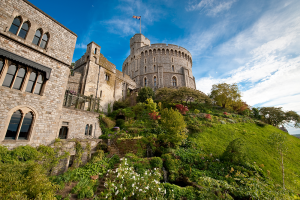
Any tour of Royal Berkshire should start with Windsor Castle, which has been home to kings and queens of England for almost 1,000 years. Built by William the Conqueror on a site chosen for its high ground and proximity to a hunting forest, Windsor Castle was embellished by successive monarchs, and in the mid-14th century was transformed by Edward III from a military fortress to a grand Gothic palace. The ornate St George’s Chapel was completed in 1528 by Henry VIII. This is where the late Queen Elizabeth was laid to rest in the Royal Vault in September 2022, memorably accompanied by a lone bagpiper.
In 1992, which Queen Elizabeth famously described as an “annus horribilis”, a devastating fire destroyed 115 rooms, but thanks to a remarkable restoration, visitors to the castle today will find no trace of the castle’s darkest day. You can walk through the magnificent state rooms, visit the reimagined childhood quarters of Queen Victoria, and step inside St George’s Chapel to marvel at its stained-glass windows and intricately carved stonework.
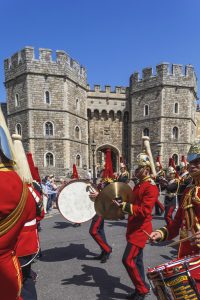
Time your visit right and you can also witness the Changing of the Guard ceremony. Three times a week at 11am, a regimental band leads the Windsor Castle Guard, clad in scarlet tunics and bearskin caps, up the High Street and into the castle to take over from the guards who have been on duty for the previous 24 or 48 hours.
Windsor Great Park, an ancient landscape of forests, grasslands and lakes which unfolds a mile from the castle gates, has its fair share of royal history too. William I used the landscape as a hunting ground a thousand years ago, and the tree-lined Long Walk was planted by Charles II. Queen Victoria picnicked on the shores of Virginia Water, a two-mile-long lake within the park, and a century later Prince Philip was appointed Park Ranger – one of Elizabeth II’s first acts as Queen. His stewardship continued for 70 years; he introduced 42 red deer from Balmoral in 1979, whose descendants now form a 500-strong herd.
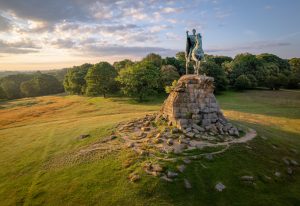
Queen Anne was fond of horse-drawn carriage rides in Windsor Great Park (a pursuit that you can still enjoy today, best experienced in spring when the magnolias and cherry blossom are in full bloom). It was while she was out riding that the queen noticed a stretch of heathland just five miles from Windsor Castle and declared it would be ideal for “horses to gallop at full stretch”. She founded Ascot Racecourse here in 1711, which has since become a highlight of the summer social calendar.
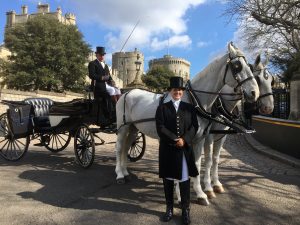
Every June, racegoers don their most glamorous attire to visit this world-famous course, where it’s hats rather than horses that tend to grab the most attention. Flamboyant headwear is de rigueur, and all eyes are on the royal enclosure for a glimpse of the King and Queen in their finery.
Basildon Park
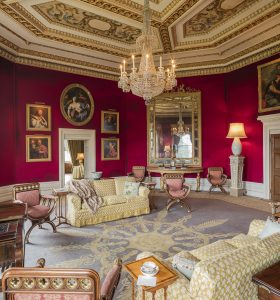
For more elegance and grandeur, head west to Basildon Park. This Palladian stately home, standing in columned splendour in 400 acres of parkland, was originally built in 1771 by Francis Sykes, who had made his fortune in the East India Company. It was requisitioned in the Second World War, when it was used by the 101st Airborne Division of the American Army for D-Day training and later as a prisoner of war camp for German and Italian soldiers. It emerged from the war a shell of its former magnificence, but was lovingly revived by its new owners Lord and Lady Iliffe in 1952, who filled it with antiques they found in auctions and from other derelict country houses.
Villages in the Thames Valley
Beyond the country estates and the royal pomp and splendour, a quieter Berkshire awaits. In the Thames Valley you’ll find a string of quaint villages prettily sited along the lush, willow-fringed banks of the meandering river. This unspoilt stretch of the Thames was immortalised in Three Men in a Boat, Jerome K Jerome’s 1889 comic tale of the adventures and mishaps of three gentlemen on a journey along the river.
Sonning
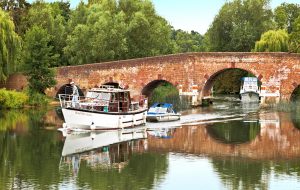
The trio moor up at the village of Sonning, just east of the county town of Reading, and find it “the most fairy-like little nook on the whole river…more like a stage village than one built of bricks and mortar”. The description still holds today. The Mill at Sonning, a pint-sized theatre on the banks of the river – frequented by George and Amal Clooney, who live locally – will be staging Three Men in a Boat this summer (6 June to 13 July).
Bray
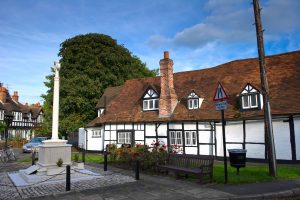
In another scene from the book, the three, famished after a long row upriver, stop to open a can of pineapple chunks but find they’ve forgotten the tin opener (after a comical struggle, the tin ends up in the Thames). These days, lunch on this gilded stretch of the river is a more gourmet affair. The little village of Bray, a well-to-do place of riverside mansions and flower-fronted cottages, is a gastronomic hotspot, boasting two restaurants with three Michelin stars apiece.
Cookham
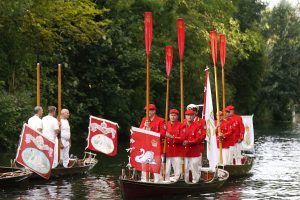
Further north is pretty Cookham, once home to the artist Sir Stanley Spencer, one of the greatest British painters of the 20th century. The Stanley Spencer Gallery displays his paintings of this Thames-side idyll, which he called a “village in heaven”.
One of Spencer’s subjects was the annual Swan Upping ceremony, which takes place along this stretch of the river every July. In a ceremony that dates back to the 12th century, when the Crown claimed ownership of all mute swans, the scarlet-clad Royal Swan Marker, wearing a hat with a white swan’s feather, boards a traditional wooden skiff flying flags bearing the King’s cypher, and carries out a census of the local swan population. Crowds gather along the banks to take in the curious sight of liveried officials lifting regal swans from the river: as colourful a display as you’ll find of Berkshire’s ancient royal heritage.
This is an extract, read the full feature on Royal Berkshire in the March/April 2024 issue of BRITAIN, available to buy here from Friday 9 February.
Read more from Britain:
The Suffolk Coast: The picturesque seaside resorts and rural villages at England’s eastern edge

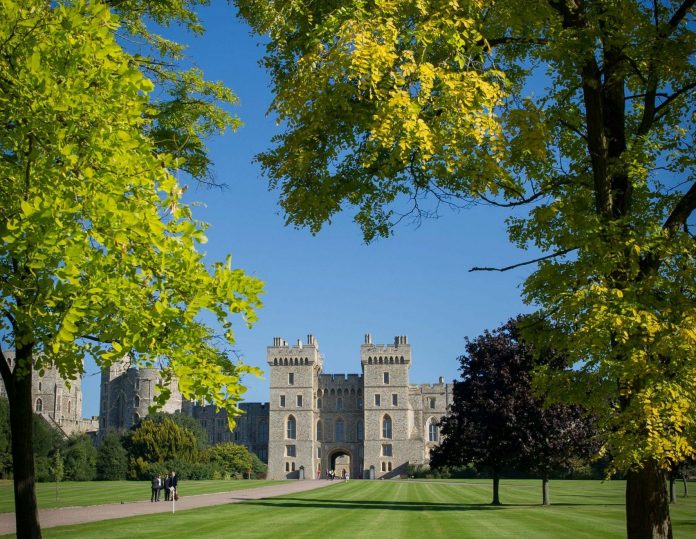




 © 2024
© 2024